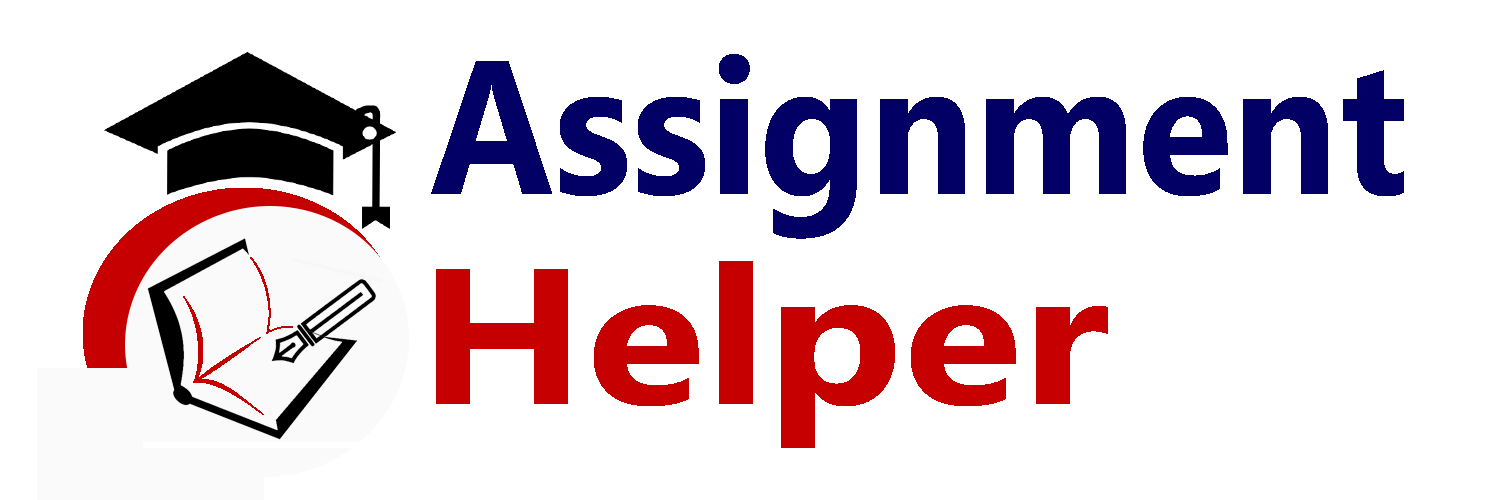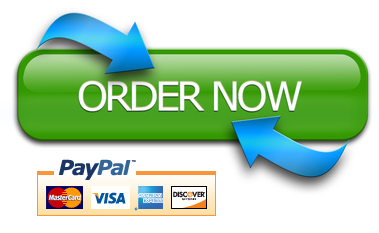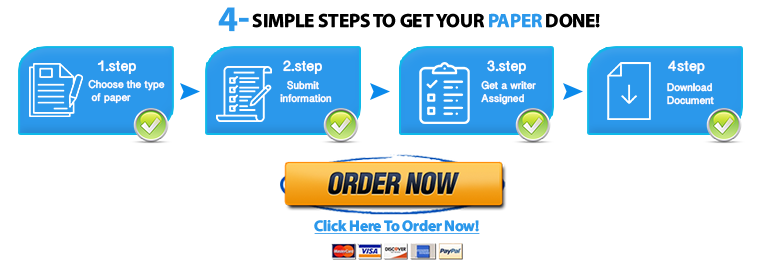Table of Contents
ToggleThe Topic 1 Resource, The Essentials: Core Competencies for Professional Nursing Education,” represents the core competencies

The Topic 1 Resource, The Essentials: Core Competencies for Professional Nursing Education,” represents the core competencies of professional nursing education and provides a framework that nursing programs use to prepare professional nurses. The RN-BSN program at Grand Canyon University meets the requirements for clinical competencies as defined by the Commission on Collegiate Nursing Education (CCNE) and the American Association of Colleges of Nursing (AACN), using both direct and indirect care experiences for practicing nurses. In your practicum course, you will complete these hours with a preceptor and work to develop a change project.
Which of the 10 domains in the “The Essentials: Core Competencies for Professional Nursing Education” are you interested in learning more about and why? Based on the readings in the Class and Topic 1 Resources, what are some characteristics of successful students and what strategies can you implement to be a successful student? Identify a role model or mentor who would be able to support your professional growth.
Initial discussion question posts should be a minimum of 200 words and include at least two references cited using APA format. Responses to peers or faculty should be 100-150 words and include one reference. Refer to “RN-BSN Discussion Question Rubric” and “RN-BSN Participation Rubric,” located in Class Resources, to understand the expectations for initial discussion question posts and participation posts, respectively.
American Association of Colleges of Nursing Core Competencies for Professional Nursing Education
Expert Answer and Explanation
Out the ten domains in “The Essentials: Core Competencies for Professional Nursing Education,” the one that interests me the most is domain eight, which focuses on informatics and healthcare technologies. The future of healthcare lies in our ability to leverage technology to support the delivery of quality care and reduce healthcare disparities. The application of informatics and healthcare technology is quite diverse, including facilitating communication with patients and even among care providers. Informatics and healthcare technology facilitate the collection and analysis of data, in turn, supporting faster and more effective decision-making (Zhang et al., 2019).
I believe that healthcare technology holds the key to dealing with most of the challenges that we face in healthcare, such as reducing disparities, enhancing quality and safety in clinical settings, improving decision-making, and supporting interprofessional collaboration. Therefore, it will be an essential aspect that every nurse should consider having going forward.
The characteristics of a successful student include effective time management, being orderly, and ethical, and being an effective communicator. To become a successful student, there are various strategies that one should take. The first strategy is to have better control of time by planning in advance, including planning for other life-related tasks like child care. Additionally, one should assess and intentionally make an effort to enhance their writing skills using supportive resources available in and outside the school library.
It is also important to communicate with friends, family, and colleagues to have them understand the demands of the program, which will go a long way in preventing any unplanned meetings or inconveniences that could affect the allocated time for coursework (Sanders, 2019). My current manager has always been my mentor. She has a 20-year tenure in nursing and is currently pursuing her DNP. She started from the bottom of the ladder in her nursing career and has advanced to where she currently is. Her qualities in leadership and competence in the profession are what make me look towards her for guidance and mentorship.
References
Sanders, E. (2019). Succeeding in an online nursing program. Nursing Made Incredibly Easy!, 17 (1), 14-16. https://doi.org/10.1097/01.NME.0000549623.58762.3c
Zhang, X., Hailu, B., Tabor, D. C., Gold, R., Sayre, M. H., Sim, I., Jean-Francois, B., Casnoff, C. A., Cullen, T., Thomas, V. A., Jr, Artiles, L., Williams, K., Le, P. T., Aklin, C. F., & James, R. (2019). Role of health information technology in addressing health disparities: patient, clinician, and system perspectives. Medical Care, 57 Suppl 6 Suppl 2(Suppl 6 2), S115–S120. https://doi.org/10.1097/MLR.
Place your order now for a similar assignment and get fast, cheap and best quality work written by our expert level assignment writers. Use Coupon: NEW30 to Get 30% OFF Your First Order
Use Coupon: NEW30 to Get 30% OFF Your First Order

The Essentials: Core Competencies for Professional Nursing Education
Introduction
The landscape of nursing education has undergone a revolutionary transformation with the introduction of The Essentials: Core Competencies for Professional Nursing Education. Released in 2021, this framework marks a transformative move toward competency-based education (CBE), emphasizing outcomes—what students can demonstrate—rather than focusing solely on classroom content.
This comprehensive framework represents the most significant update to nursing education standards in decades, providing a unified approach to preparing nurses across all degree levels. Whether you’re a nursing educator, student, or healthcare professional, understanding The Essentials is crucial for navigating the future of professional nursing practice.
What Are The Essentials: Core Competencies for Professional Nursing Education?
The Essentials: Core Competencies for Professional Nursing Education is a foundational document developed by the American Association of Colleges of Nursing (AACN) that establishes the framework for modern nursing education. Used to define quality in nursing education, the AACN Essentials outline the necessary curriculum content and expected competencies of graduates from baccalaureate, master’s, and Doctor of Nursing Practice programs.
Key Features of The 2021 Essentials Framework
The revolutionary 2021 update introduced several groundbreaking changes:
- Competency-Based Approach: Shift from knowledge-focused to skill-demonstration model
- Unified Framework: Applicable across all nursing degree levels
- 10 Core Domains: Comprehensive coverage of essential nursing competencies
- Level-Based Progression: Entry-level and advanced-level competencies
- Contemporary Focus: Integration of modern healthcare challenges and technologies
The 10 Essential Domains: A Comprehensive Overview
The revised Essentials framework includes competencies organized within 10 domains at two levels of nursing education: entry level and advanced level. Each domain addresses critical aspects of professional nursing practice:
| Domain | Core Focus Area | Key Competencies |
|---|---|---|
| Domain 1 | Knowledge for Nursing Practice | Integration of liberal arts, sciences, and nursing knowledge |
| Domain 2 | Person-Centered Care | Holistic, culturally responsive patient care |
| Domain 3 | Population Health | Community health, epidemiology, and health promotion |
| Domain 4 | Scholarship for Nursing Practice | Evidence-based practice and research utilization |
| Domain 5 | Quality and Safety | Continuous improvement and risk management |
| Domain 6 | Interprofessional Partnerships | Collaborative healthcare delivery |
| Domain 7 | Systems-Based Practice | Healthcare system navigation and optimization |
| Domain 8 | Information and Healthcare Technologies | Digital health literacy and technology integration |
| Domain 9 | Professionalism | Ethical practice and professional development |
| Domain 10 | Personal, Professional, and Leadership Development | Self-reflection, resilience, and leadership skills |
Detailed Domain Analysis
Domain 1: Knowledge for Nursing Practice
This foundational domain emphasizes the integration of:
- Liberal arts and sciences knowledge
- Nursing-specific theoretical frameworks
- Evidence-based decision-making processes
- Critical thinking and clinical reasoning skills
Domain 2: Person-Centered Care
The domains provide details that revolve around four areas of care: 1) disease prevention/promotion of health and wellbeing, 2) chronic disease care, 3) regenerative or restorative care, and 4) hospice/palliative/supportive care.
This domain focuses on:
- Individual patient needs and preferences
- Cultural competency and sensitivity
- Family-centered care approaches
- Health equity and social determinants of health
Domain 3: Population Health
Population health competencies include:
- Community assessment and intervention
- Epidemiological principles
- Health policy and advocacy
- Disease prevention strategies
Implementation Timeline and Statistics
Current Implementation Status
The new AACN Essentials debuted in April 2021, and will be gradually incorporated into current four-year nursing programs over a period of three years or longer. The phased implementation approach allows nursing schools to methodically integrate competency-based education principles.
Critical Statistics About Nursing Competency
In one study from 2017, “23% of new nursing graduates are competent with basic clinical judgment skills despite passing the National Council Licensure Exam for Registered Nurses (NCLEX-RN)”. This statistic underscores the urgent need for competency-based education reforms.
Key Implementation Metrics
| Metric | Current Status | Target Goal |
|---|---|---|
| Nursing Schools Adopting CBE | Gradual rollout (2021-2024) | 100% by 2027 |
| Graduate Competency Rates | 23% (pre-2021) | 90%+ (target) |
| Faculty Training Completion | In progress | 95% by 2026 |
| Curriculum Alignment | Phase 1 complete | Full alignment by 2028 |
Competency-Based Education: The Future of Nursing
Understanding Competency-Based Education (CBE)
Nursing education is shifting toward competency-based education (CBE) in line with the American Association of Colleges of Nursing’s (AACN) 2021 Essentials. This pedagogical shift from knowledge-based learner outcomes to competency-based learner and program outcomes affects how faculty teach, how students learn, and how programs allocate resources to support this change.
Benefits of CBE in Nursing Education
- Improved Patient Outcomes: Graduates demonstrate actual competencies rather than theoretical knowledge
- Enhanced Employer Confidence: Greater clarity and confirmation regarding the knowledge and skills of nursing school graduates
- Standardized Quality: Consistent competency expectations across all nursing programs
- Career Readiness: Better preparation for real-world healthcare challenges
CBE Implementation Challenges
| Challenge | Impact Level | Solution Strategy |
|---|---|---|
| Faculty Development | High | Comprehensive training programs |
| Assessment Methods | Medium | New evaluation tools development |
| Resource Allocation | High | Strategic budget planning |
| Technology Integration | Medium | Digital platform adoption |
| Curriculum Redesign | High | Systematic review and update |
Practical Applications Across Nursing Specialties
Bachelor of Science in Nursing (BSN) Programs
BSN programs utilizing The Essentials focus on:
- Entry-level competencies across all 10 domains
- Clinical decision-making skills
- Leadership preparation
- Community health engagement
Master of Science in Nursing (MSN) Programs
Advanced practice programs emphasize:
- Advanced-level competencies
- Specialized clinical expertise
- Healthcare system leadership
- Quality improvement initiatives
Doctor of Nursing Practice (DNP) Programs
The 2021 American Association of Colleges of Nursing (AACN) Essentials: Core Competencies for Professional Nursing Practice articulate the standards for baccalaureate and graduate level nursing education in the 21st century.
DNP programs integrate:
- Highest-level competencies
- Healthcare innovation leadership
- Policy development and implementation
- Advanced clinical scholarship
Assessment and Evaluation in The Essentials Framework
Competency Assessment Methods
Traditional vs. Competency-Based Assessment
| Assessment Type | Traditional Model | Competency-Based Model |
|---|---|---|
| Focus | Knowledge retention | Skill demonstration |
| Timing | Fixed schedules | Competency achievement |
| Evaluation | Standardized tests | Performance-based |
| Progression | Time-based | Mastery-based |
New Assessment Strategies
- Simulation-Based Evaluation
- High-fidelity patient scenarios
- Interprofessional team exercises
- Critical thinking assessments
- Portfolio Development
- Competency documentation
- Reflective practice journals
- Professional growth tracking
- Peer and Self-Assessment
- 360-degree feedback systems
- Self-reflection exercises
- Collaborative learning evaluation
Technology Integration and Digital Health Literacy
Domain 8: Information and Healthcare Technologies
Modern nursing practice requires sophisticated technological competencies:
Essential Technology Skills
- Electronic Health Records (EHR) Proficiency
- Data entry and retrieval
- Clinical decision support systems
- Patient safety alerts
- Telehealth Competencies
- Virtual patient assessments
- Remote monitoring systems
- Digital communication platforms
- Data Analytics and Informatics
- Quality metrics analysis
- Population health data interpretation
- Evidence-based practice integration
Emerging Technology Trends
| Technology | Current Use | Future Applications |
|---|---|---|
| Artificial Intelligence | Basic decision support | Advanced diagnostic assistance |
| Virtual Reality | Training simulations | Therapeutic interventions |
| Internet of Things (IoT) | Patient monitoring | Predictive health analytics |
| Blockchain | Data security | Credential verification |
Diversity, Equity, and Inclusion in Nursing Education
Social Justice and Health Equity
Diversity, equity, and inclusion—as a value—supports nursing workforce development to prepare graduates who contribute to the improvement of access and care quality for underrepresented and medically underserved populations.
Key DEI Initiatives
- Culturally Responsive Care Training
- Cultural competency development
- Implicit bias recognition
- Health disparities education
- Diverse Faculty and Student Recruitment
- Inclusive hiring practices
- Scholarship programs for underrepresented groups
- Mentorship opportunities
- Community Engagement
- Service-learning projects
- Health fairs in underserved areas
- Community partnership development
Quality and Safety: Domain 5 Deep Dive
Patient Safety Culture
Quality and safety represent core competencies that every nursing graduate must master:
Essential Safety Competencies
- Error Prevention and Reporting
- Infection Control Practices
- Medication Administration Safety
- Fall Prevention Strategies
- Communication and Handoff Protocols
Quality Improvement Methodologies
| Method | Application | Expected Outcomes |
|---|---|---|
| PDSA Cycles | Process improvement | Systematic change implementation |
| Root Cause Analysis | Error investigation | Prevention strategy development |
| Lean Principles | Waste reduction | Efficiency optimization |
| Six Sigma | Variation reduction | Quality standardization |
Leadership Development and Professional Growth
Domain 10: Personal, Professional, and Leadership Development
Modern nursing requires strong leadership competencies at all levels:
Leadership Competency Areas
- Self-Awareness and Reflection
- Personal strengths and weaknesses identification
- Continuous learning commitment
- Professional goal setting
- Team Leadership
- Delegation and supervision skills
- Conflict resolution abilities
- Motivation and inspiration techniques
- Organizational Leadership
- Change management capabilities
- Strategic thinking development
- Healthcare policy influence
Professional Development Pathways
- Continuing Education Requirements
- Professional Certification Opportunities
- Leadership Training Programs
- Advanced Degree Pursuits
Interprofessional Collaboration: Domain 6 Insights
Building Effective Healthcare Teams
The new Essentials provide educators with guidelines for curriculum changes, featuring ten broad domains with included competencies and sub-competencies across four spheres of healthcare, the lifespan, and among diverse patient populations.
Key Collaboration Competencies
- Communication Skills
- Clear, concise information exchange
- Active listening techniques
- Conflict resolution strategies
- Role Understanding
- Healthcare team member responsibilities
- Scope of practice awareness
- Professional boundary respect
- Shared Decision-Making
- Collaborative care planning
- Patient-centered team meetings
- Evidence-based consensus building
Interprofessional Team Members
| Team Member | Primary Role | Collaboration Points |
|---|---|---|
| Physicians | Medical diagnosis/treatment | Care plan development |
| Pharmacists | Medication management | Drug therapy optimization |
| Social Workers | Psychosocial support | Discharge planning |
| Physical Therapists | Mobility/function | Rehabilitation goals |
| Nutritionists | Dietary planning | Health promotion |
Frequently Asked Questions (FAQs)
General Questions About The Essentials
Q: What is the main difference between the old and new AACN Essentials? A: The most recent update marks a transformative move toward competency-based education (CBE). Rather than focusing solely on classroom content, CBE emphasizes outcomes—what students can demonstrate.
Q: How long do nursing schools have to implement The Essentials? A: The new AACN Essentials debuted in April 2021, and will be gradually incorporated into current four-year nursing programs over a period of three years or longer.
Q: Do The Essentials apply to all nursing degree levels? A: Yes, The Essentials framework applies to all nursing education levels, including BSN, MSN, and DNP programs, with competencies organized at entry-level and advanced-level tiers.
Implementation Questions
Q: What resources are available for faculty training? A: The Essentials Tool Kit is a continuously evolving resource designed to assist faculty and others engaged in implementing the 2021 Essentials, including the transition to competency-based education and competency-based assessment.
Q: How will this affect NCLEX preparation? A: While NCLEX content remains important, The Essentials focus on developing actual clinical competencies that go beyond test-taking skills to ensure graduates can provide safe, effective patient care.
Q: What is the timeline for full implementation? A: Implementation is phased over multiple years, with most nursing programs expected to achieve full alignment by 2027-2028.
Career and Educational Impact
Q: How will employers recognize competency-based graduates? A: An advantage of this approach is greater clarity and confirmation regarding the knowledge and skills of nursing school graduates, providing employers with better understanding of graduate capabilities.
Q: Will existing nurses need additional training? A: While not required, many healthcare organizations are providing continuing education aligned with The Essentials to ensure all nurses meet contemporary practice standards.
Q: How do The Essentials address healthcare technology? A: Domain 8 specifically focuses on Information and Healthcare Technologies, ensuring graduates are prepared for digital health environments.
Future Implications and Trends
The Evolution of Nursing Education
The implementation of The Essentials represents just the beginning of nursing education transformation:
Predicted Developments (2025-2030)
- Advanced Simulation Technologies
- Virtual reality patient interactions
- Augmented reality clinical training
- AI-powered learning assessment
- Personalized Learning Pathways
- Adaptive curriculum design
- Individual competency tracking
- Customized skill development
- Global Competency Standards
- International nursing mobility
- Standardized global certifications
- Cross-cultural competency emphasis
Healthcare Industry Impact
- Improved Patient Outcomes: Better-prepared graduates leading to enhanced care quality
- Reduced Training Costs: Employers spending less on new graduate orientation
- Enhanced Innovation: Competency-based education fostering healthcare advancement
Resources and Tools for Implementation
Official AACN Resources
- AACN Essentials Toolkit: Comprehensive implementation guidance
- Faculty Development Programs: Training and certification opportunities
- Assessment Templates: Competency evaluation frameworks
- Best Practice Examples: Successful implementation models
Additional Learning Resources
Professional Organizations
- American Nurses Association (ANA)
- National League for Nursing (NLN)
- Sigma Theta Tau International Honor Society
Online Learning Platforms
- AACN Competency-Based Education Modules
- Quality and Safety Education for Nurses (QSEN)
- Institute for Healthcare Innovation
Assessment and Evaluation Tools
| Tool Type | Purpose | Access Level |
|---|---|---|
| Competency Checklists | Skill tracking | Public |
| Simulation Rubrics | Performance evaluation | Member access |
| Portfolio Templates | Professional development | Open source |
| Peer Assessment Forms | Collaborative evaluation | Institutional |
Conclusion: Embracing the Future of Nursing Education
The Essentials: Core Competencies for Professional Nursing Education represents a paradigm shift that will define nursing practice for decades to come. The new Essentials are designed to provide a transparent and stable understanding for faculty, students, and employers with regards to the competencies of graduates across programs.
Key Takeaways
- Competency-Based Focus: Education now emphasizes what graduates can do, not just what they know
- Unified Framework: All nursing degree levels operate under consistent standards
- Contemporary Relevance: The 10 domains address modern healthcare challenges
- Implementation Timeline: Gradual rollout ensures quality transition
- Continuous Evolution: Framework adapts to emerging healthcare needs
Moving Forward
As nursing education continues to evolve, The Essentials provide a stable foundation for preparing competent, confident, and capable nursing professionals. Whether you’re a current student, practicing nurse, or educator, understanding and embracing these competencies is essential for success in modern healthcare.
The transformation of nursing education through The Essentials represents more than curricular change—it embodies a commitment to excellence, safety, and innovation in nursing practice. By focusing on competencies rather than content, we ensure that nursing graduates are truly prepared to meet the complex healthcare challenges of the 21st century.
For the most current information and resources, visit the AACN Essentials website and explore the comprehensive toolkit designed to support successful implementation of competency-based nursing education.
References
- American Association of Colleges of Nursing. (2021). The Essentials: Core Competencies for Professional Nursing Education. https://www.aacnnursing.org/Portals/0/PDFs/Publications/Essentials-2021.pdf
- University of Utah Health, College of Nursing. (2024, December 9). The Essentials: Core Competencies for Professional Nursing Education. https://nursing.utah.edu/blog/2024/12/essentials-core-competencies-professional-nursing-education
- Journal of Nursing Regulation. (2022, January 1). The Revised AACN Essentials: Implications for Nursing Regulation. https://www.journalofnursingregulation.com/article/S2155-8256(22)00009-6/fulltext
- Core Higher Ed. (2024, February 28). A quick guide to the new AACN Essentials. https://corehighered.com/en/blog/a-quick-guide-to-the-new-aacn-essentials
- UWorld Nursing. (2025, April 25). American Association of Colleges of Nursing (AACN) Essentials. https://nursing.uworld.com/educators/accreditation/aacn-essentials/
- ScienceDirect. (2024, April 4). The AACN essentials: An intentional framework for successful implementation. https://www.sciencedirect.com/science/article/abs/pii/S8755722324000498
- American Association of Colleges of Nursing. (2024). AACN Essentials FAQs. https://www.aacnnursing.org/essentials/tool-kit/faqs
- Western Governors University. (2024, August 19). AACN Nursing Certification Essentials at WGU. https://www.wgu.edu/online-nursing-health-degrees/rn-to-bsn-nursing-bachelors-program/aacn.html

I am a professional nursing assignment expert offering comprehensive academic support to university nursing students across various institutions. My services are designed to help learners manage their workload effectively while maintaining academic excellence. With years of experience in nursing research, case study writing, and evidence-based reporting, I ensure every paper is original, well-researched, and aligned with current academic standards.
My goal is to provide dependable academic assistance that enables students to focus on practical training and career growth.
Contact me today to receive expert guidance and timely, high-quality nursing assignment help tailored to your academic needs.

